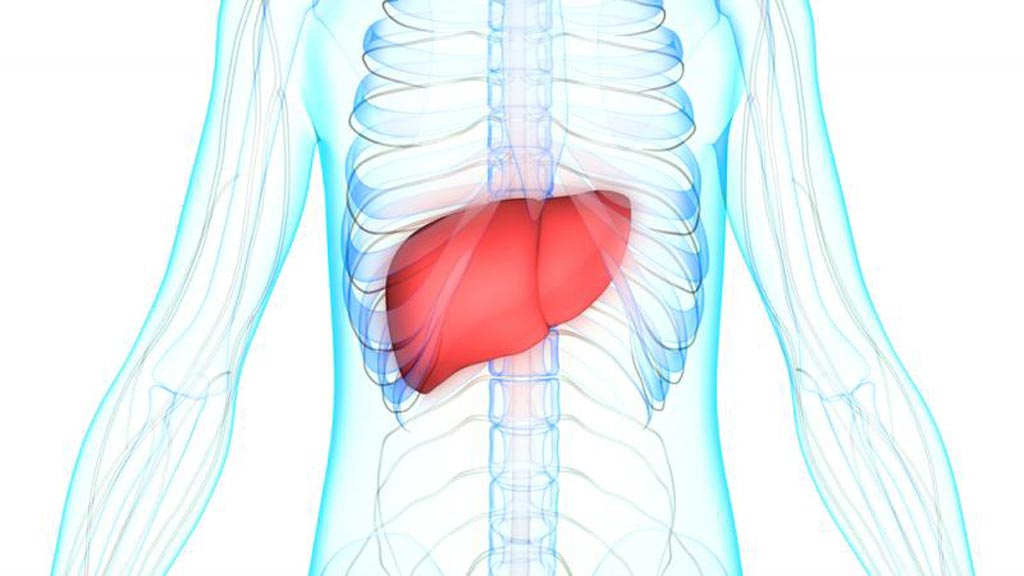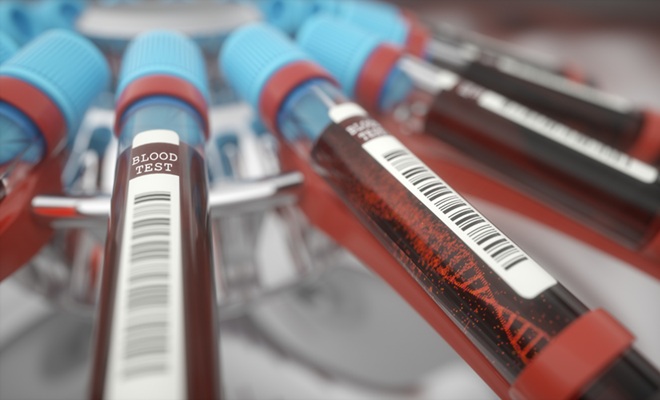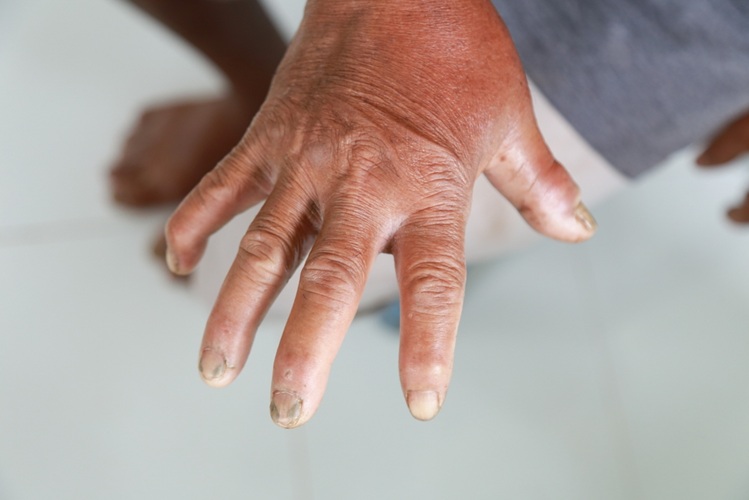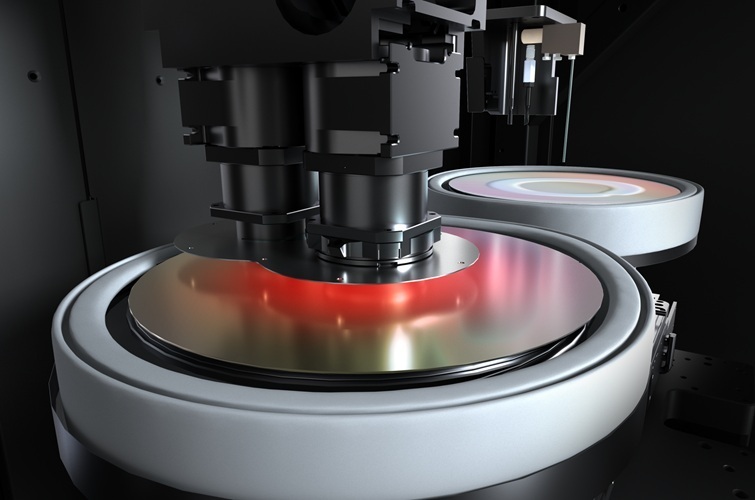Microscopic Cubes Safely Deliver Toxic Drugs to Cancer Cells
|
By LabMedica International staff writers Posted on 11 Jul 2017 |

Image: Researchers have developed micro-cubes that can sponge up a hydrophobic anti-cancer drug and safely deliver it to cancer cells. Tissue culture tests show these tiny, porous cubes are more potent against liver cancer cells and less harmful to normal liver cells, compared to the drug alone (Photo courtesy of the University of Alabama).
Microscopic hydrogel cubes have proven to be an effective system for the delivery of toxic chemotherapeutic agents to cancer cells growing in culture.
Many potent anticancer drugs are hydrophobic and lack tumor selectivity, which limits their application in cancer therapy. Although cubical hydrogels of poly(methacrylic acid) have been shown to exhibit excellent biocompatibility and versatility, they have not been investigated for hydrophobic drug delivery due to poor mechanical stability and incompatibility between hydrophobic drugs and a hydrophilic hydrogel network.
To overcome these limitations, investigators at the University of Alabama (Birmingham, USA) and Texas Tech University (Lubbock, USA) developed a method for preparing a multilayer hydrogel-based platform with controlled nanostructure, cubical shape, and redox-responsiveness for delivery of highly potent anticancer therapeutics such as the hydrophobic drug BA-TPQ (7-(benzylamino)-3,4-dihydro-pyrrolo[4,3,2-de]quinolin-8(1H)-one). BA-TPQ is an iminoquinone derivative and one of the most potent analogs of natural anti-cancer compounds discovered in the Philippine sponge Zyzzya fuliginosa. This drug demonstrates high potency against human breast and prostate cancer cell lines, but its use has been limited by poor solubility, low bioavailability, and undesirable toxicity.
The investigators prepared two-micrometer hydrogel cubes from layers of nontoxic cross-linked poly(methacrylic acid) formed on a removable porous scaffold. The BA-TPQ drug was absorbed into the cubes, which were then reduced to a powder by freeze-drying (lyophilization).
The investigators reported in the June 3, 2017, online edition of the journal Acta Biomaterialia that the BA-TPQ-loaded hydrogels maintained their cubical shape and pH-sensitivity after lyophilization, which would be advantageous for long-term storage. Conversely, the particles degraded in vitro in the presence of five-millimolar glutathione providing 80% drug release within 24 hours. Encapsulating BA-TPQ into hydrogels significantly increased its transport via Caco-2 cell monolayers used as a model for oral delivery where the apparent permeability of BA-TPQ-hydrogel cubes was approximately two-fold higher than that of BA-TPQ alone. BA-TPQ-hydrogel cubes exhibited better anticancer activity against HepG2 and Huh7 hepatoma cells compared to the non-encapsulated drug.
Surprisingly, normal liver cells had a lower sensitivity to BA-TPQ-hydrogel cubes compared to those of cancer cells. In addition, encapsulating BA-TPQ in the hydrogels amplified the potency of the drug via down-regulation of MDM2 (Mouse double minute 2 homolog) oncogenic protein and upregulation of p53 (a tumor suppressor) and p21 (cell proliferation suppressor) expression in HepG2 liver cancer cells.
The results obtained in this study led the investigators to say that, "We believe that our novel drug-delivery platform for the highly potent anti-cancer drug BA-TPQ provides a facile method for encapsulation of hydrophobic drugs and can facilitate enhanced efficacy for liver cancer therapy."
Related Links:
University of Alabama
Texas Tech University
Many potent anticancer drugs are hydrophobic and lack tumor selectivity, which limits their application in cancer therapy. Although cubical hydrogels of poly(methacrylic acid) have been shown to exhibit excellent biocompatibility and versatility, they have not been investigated for hydrophobic drug delivery due to poor mechanical stability and incompatibility between hydrophobic drugs and a hydrophilic hydrogel network.
To overcome these limitations, investigators at the University of Alabama (Birmingham, USA) and Texas Tech University (Lubbock, USA) developed a method for preparing a multilayer hydrogel-based platform with controlled nanostructure, cubical shape, and redox-responsiveness for delivery of highly potent anticancer therapeutics such as the hydrophobic drug BA-TPQ (7-(benzylamino)-3,4-dihydro-pyrrolo[4,3,2-de]quinolin-8(1H)-one). BA-TPQ is an iminoquinone derivative and one of the most potent analogs of natural anti-cancer compounds discovered in the Philippine sponge Zyzzya fuliginosa. This drug demonstrates high potency against human breast and prostate cancer cell lines, but its use has been limited by poor solubility, low bioavailability, and undesirable toxicity.
The investigators prepared two-micrometer hydrogel cubes from layers of nontoxic cross-linked poly(methacrylic acid) formed on a removable porous scaffold. The BA-TPQ drug was absorbed into the cubes, which were then reduced to a powder by freeze-drying (lyophilization).
The investigators reported in the June 3, 2017, online edition of the journal Acta Biomaterialia that the BA-TPQ-loaded hydrogels maintained their cubical shape and pH-sensitivity after lyophilization, which would be advantageous for long-term storage. Conversely, the particles degraded in vitro in the presence of five-millimolar glutathione providing 80% drug release within 24 hours. Encapsulating BA-TPQ into hydrogels significantly increased its transport via Caco-2 cell monolayers used as a model for oral delivery where the apparent permeability of BA-TPQ-hydrogel cubes was approximately two-fold higher than that of BA-TPQ alone. BA-TPQ-hydrogel cubes exhibited better anticancer activity against HepG2 and Huh7 hepatoma cells compared to the non-encapsulated drug.
Surprisingly, normal liver cells had a lower sensitivity to BA-TPQ-hydrogel cubes compared to those of cancer cells. In addition, encapsulating BA-TPQ in the hydrogels amplified the potency of the drug via down-regulation of MDM2 (Mouse double minute 2 homolog) oncogenic protein and upregulation of p53 (a tumor suppressor) and p21 (cell proliferation suppressor) expression in HepG2 liver cancer cells.
The results obtained in this study led the investigators to say that, "We believe that our novel drug-delivery platform for the highly potent anti-cancer drug BA-TPQ provides a facile method for encapsulation of hydrophobic drugs and can facilitate enhanced efficacy for liver cancer therapy."
Related Links:
University of Alabama
Texas Tech University
Latest BioResearch News
- Genome Analysis Predicts Likelihood of Neurodisability in Oxygen-Deprived Newborns
- Gene Panel Predicts Disease Progession for Patients with B-cell Lymphoma
- New Method Simplifies Preparation of Tumor Genomic DNA Libraries
- New Tool Developed for Diagnosis of Chronic HBV Infection
- Panel of Genetic Loci Accurately Predicts Risk of Developing Gout
- Disrupted TGFB Signaling Linked to Increased Cancer-Related Bacteria
- Gene Fusion Protein Proposed as Prostate Cancer Biomarker
- NIV Test to Diagnose and Monitor Vascular Complications in Diabetes
- Semen Exosome MicroRNA Proves Biomarker for Prostate Cancer
- Genetic Loci Link Plasma Lipid Levels to CVD Risk
- Newly Identified Gene Network Aids in Early Diagnosis of Autism Spectrum Disorder
- Link Confirmed between Living in Poverty and Developing Diseases
- Genomic Study Identifies Kidney Disease Loci in Type I Diabetes Patients
- Liquid Biopsy More Effective for Analyzing Tumor Drug Resistance Mutations
- New Liquid Biopsy Assay Reveals Host-Pathogen Interactions
- Method Developed for Enriching Trophoblast Population in Samples
Channels
Clinical Chemistry
view channel
New Method Uses Pulsed Infrared Light to Find Cancer's 'Fingerprints' In Blood Plasma
Cancer diagnoses have traditionally relied on invasive or time-consuming procedures like tissue biopsies. Now, new research published in ACS Central Science introduces a method that utilizes pulsed infrared... Read more
Carbon Nanotubes Help Build Highly Accurate Sensors for Continuous Health Monitoring
Current sensors can measure various health indicators, such as blood glucose levels, in the body. However, there is a need to develop more accurate and sensitive sensor materials that can detect lower... Read moreMolecular Diagnostics
view channel
Gene-Based Blood Test Accurately Predicts Tumor Recurrence of Advanced Skin Cancer
Melanoma, an aggressive form of skin cancer, becomes extremely difficult to treat once it spreads to other parts of the body. For patients with metastatic melanoma tumors that cannot be surgically removed... Read more
Blood Test Could Identify Patients at Risk for Severe Scleroderma
Systemic sclerosis, also known as scleroderma, causes the hardening of the skin and connective tissues. In many cases, the disease can also damage vital organs, including the heart, kidneys, lungs, and... Read moreHematology
view channel
New Scoring System Predicts Risk of Developing Cancer from Common Blood Disorder
Clonal cytopenia of undetermined significance (CCUS) is a blood disorder commonly found in older adults, characterized by mutations in blood cells and a low blood count, but without any obvious cause or... Read more
Non-Invasive Prenatal Test for Fetal RhD Status Demonstrates 100% Accuracy
In the United States, approximately 15% of pregnant individuals are RhD-negative. However, in about 40% of these cases, the fetus is also RhD-negative, making the administration of RhoGAM unnecessary.... Read moreImmunology
view channel
Stem Cell Test Predicts Treatment Outcome for Patients with Platinum-Resistant Ovarian Cancer
Epithelial ovarian cancer frequently responds to chemotherapy initially, but eventually, the tumor develops resistance to the therapy, leading to regrowth. This resistance is partially due to the activation... Read more
Machine Learning-Enabled Blood Test Predicts Immunotherapy Response in Lymphoma Patients
Chimeric antigen receptor (CAR) T-cell therapy has emerged as one of the most promising recent developments in the treatment of blood cancers. However, over half of non-Hodgkin lymphoma (NHL) patients... Read moreMicrobiology
view channel
Handheld Device Delivers Low-Cost TB Results in Less Than One Hour
Tuberculosis (TB) remains the deadliest infectious disease globally, affecting an estimated 10 million people annually. In 2021, about 4.2 million TB cases went undiagnosed or unreported, mainly due to... Read more
New AI-Based Method Improves Diagnosis of Drug-Resistant Infections
Drug-resistant infections, particularly those caused by deadly bacteria like tuberculosis and staphylococcus, are rapidly emerging as a global health emergency. These infections are more difficult to treat,... Read more
Breakthrough Diagnostic Technology Identifies Bacterial Infections with Almost 100% Accuracy within Three Hours
Rapid and precise identification of pathogenic microbes in patient samples is essential for the effective treatment of acute infectious diseases, such as sepsis. The fluorescence in situ hybridization... Read morePathology
view channel
New Error-Corrected Method to Help Detect Cancer from Blood Samples Alone
"Liquid biopsy" technology, which relies on blood tests for early cancer detection and monitoring cancer burden in patients, has the potential to transform cancer care. However, detecting the mutational... Read more
"Metal Detector" Algorithm Hunts Down Vulnerable Tumors
Scientists have developed an algorithm capable of functioning as a "metal detector" to identify vulnerable tumors, marking a significant advancement in personalized cancer treatment. This breakthrough... Read more
Novel Technique Uses ‘Sugar’ Signatures to Identify and Classify Pancreatic Cancer Cell Subtypes
Pancreatic cancer is often asymptomatic in its early stages, making it difficult to detect until it has progressed. Consequently, only 15% of pancreatic cancers are diagnosed early enough to allow for... Read moreTechnology
view channel
Pain-On-A-Chip Microfluidic Device Determines Types of Chronic Pain from Blood Samples
Chronic pain is a widespread condition that remains difficult to manage, and existing clinical methods for its treatment rely largely on self-reporting, which can be subjective and especially problematic... Read more
Innovative, Label-Free Ratiometric Fluorosensor Enables More Sensitive Viral RNA Detection
Viruses present a major global health risk, as demonstrated by recent pandemics, making early detection and identification essential for preventing new outbreaks. While traditional detection methods are... Read moreIndustry
view channel
Cepheid and Oxford Nanopore Technologies Partner on Advancing Automated Sequencing-Based Solutions
Cepheid (Sunnyvale, CA, USA), a leading molecular diagnostics company, and Oxford Nanopore Technologies (Oxford, UK), the company behind a new generation of sequencing-based molecular analysis technologies,... Read more
Grifols and Tecan’s IBL Collaborate on Advanced Biomarker Panels
Grifols (Barcelona, Spain), one of the world’s leading producers of plasma-derived medicines and innovative diagnostic solutions, is expanding its offer in clinical diagnostics through a strategic partnership... Read more
























